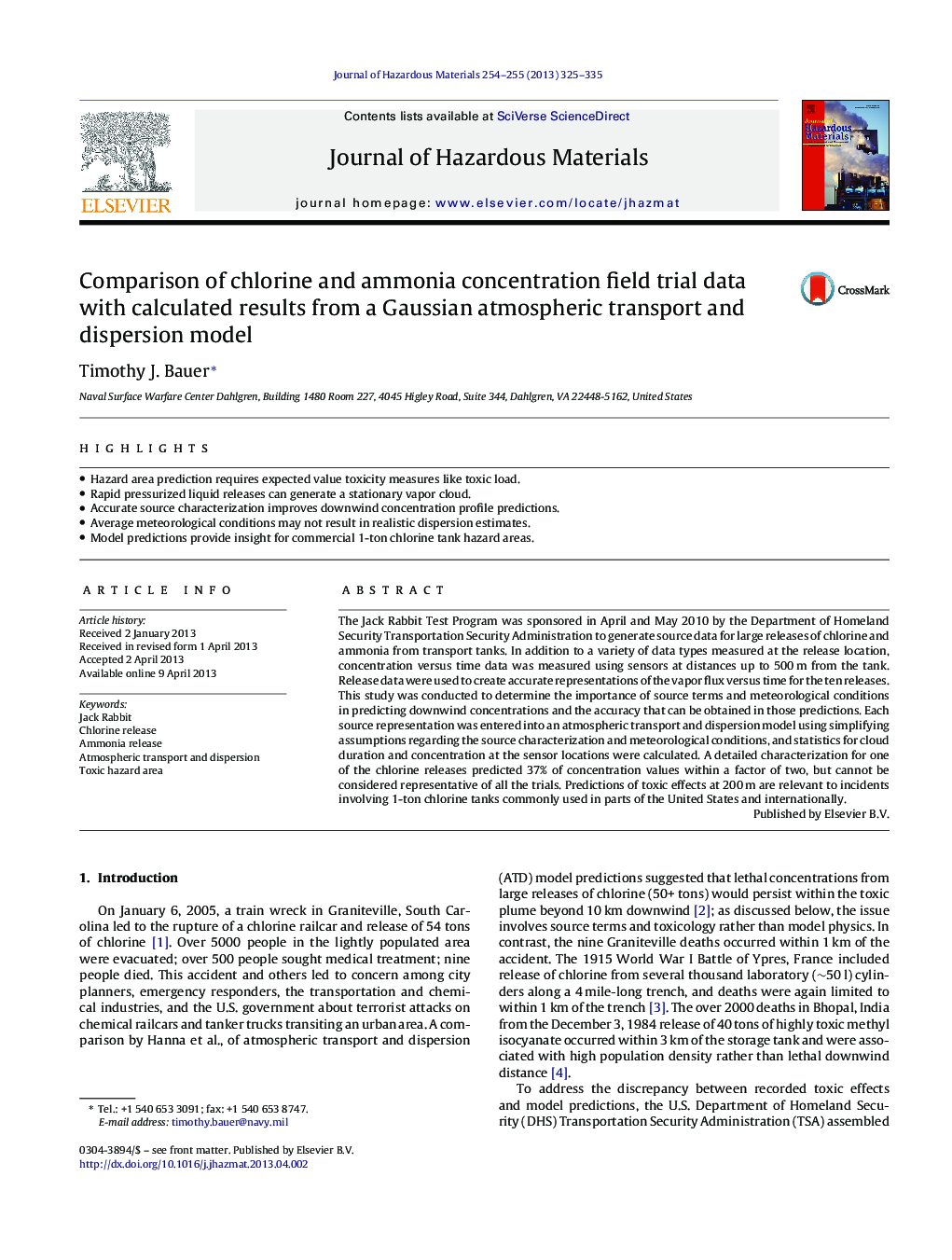| Article ID | Journal | Published Year | Pages | File Type |
|---|---|---|---|---|
| 577274 | Journal of Hazardous Materials | 2013 | 11 Pages |
Abstract
The Jack Rabbit Test Program was sponsored in April and May 2010 by the Department of Homeland Security Transportation Security Administration to generate source data for large releases of chlorine and ammonia from transport tanks. In addition to a variety of data types measured at the release location, concentration versus time data was measured using sensors at distances up to 500Â m from the tank. Release data were used to create accurate representations of the vapor flux versus time for the ten releases. This study was conducted to determine the importance of source terms and meteorological conditions in predicting downwind concentrations and the accuracy that can be obtained in those predictions. Each source representation was entered into an atmospheric transport and dispersion model using simplifying assumptions regarding the source characterization and meteorological conditions, and statistics for cloud duration and concentration at the sensor locations were calculated. A detailed characterization for one of the chlorine releases predicted 37% of concentration values within a factor of two, but cannot be considered representative of all the trials. Predictions of toxic effects at 200Â m are relevant to incidents involving 1-ton chlorine tanks commonly used in parts of the United States and internationally.
Related Topics
Physical Sciences and Engineering
Chemical Engineering
Chemical Health and Safety
Authors
Timothy J. Bauer,
